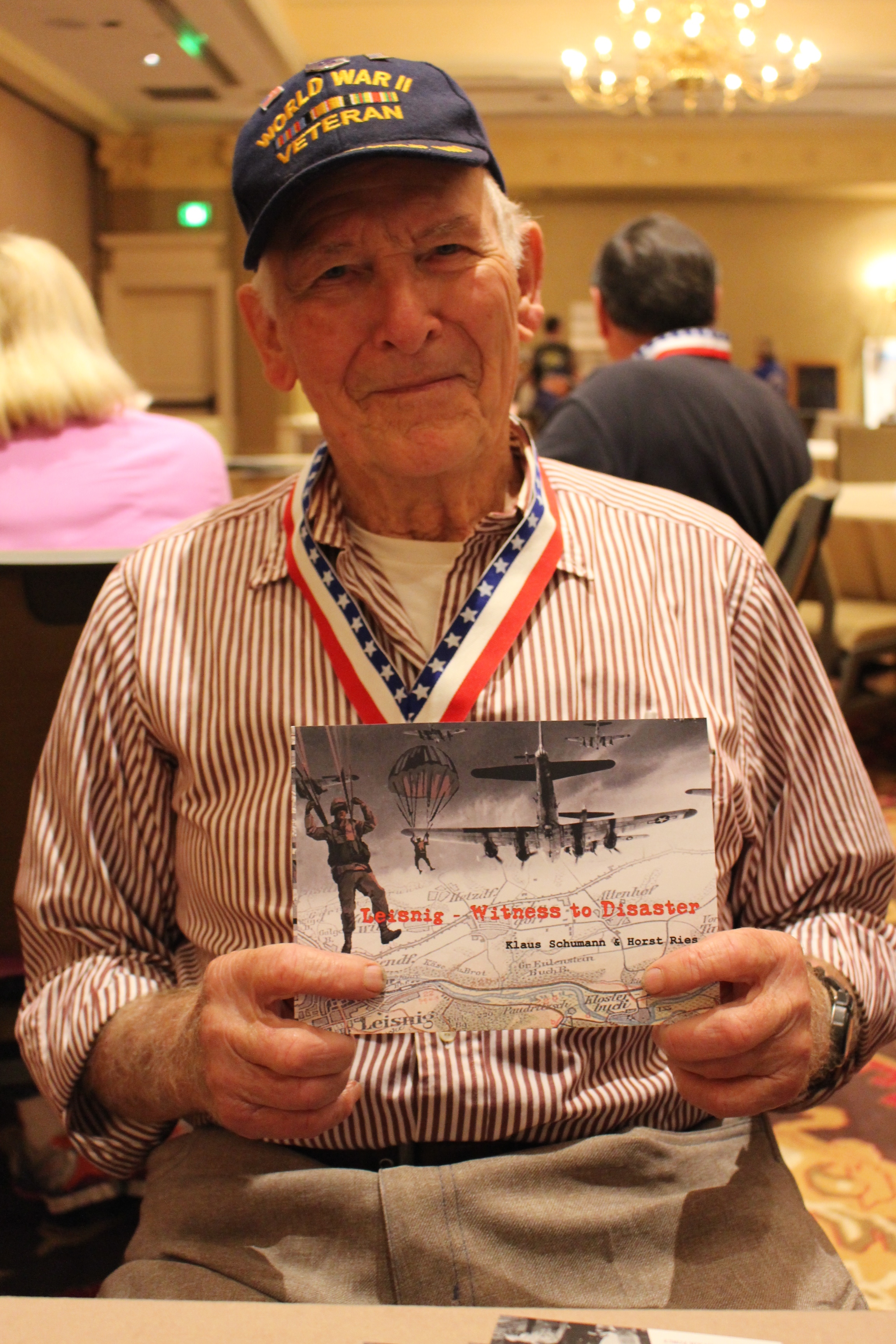Marlyn Rae Bonacker
Military
Uploaded
Object Number - UPL 5496 - Marlyn Bonacker at the 8th Air Force Historical Society reunion in Nashville, Tennessee, October 2014.
Marlyn was the sole survivor of a mid-air collision on his first mission on 6 April 1945. He went down over Leisnig after a mission to Leipzig, Germany. He became a Prisoner of War (POW) escapee.
Connections
See how this entry relates to other items in the archive by exploring the connections below.
Units served with
![Three airmen of the 100th Bomb Group, Lieutenant Kenneth Menzie, Lieutenant Donald Strout and Lieutenant Norman Scott, plan the route they will take during the next mission in their B-17 Flying Fortress (serial number 42-30380). Image stamped on reverse: 'Reviewed and passed U.S. Army 23 Aug 1943 Press Censor E.T.O. U.S.A.' [stamp]'. Passed for publication 23 August 1943 INTLD 16 General Section Press Censorship Bureau '[stamp], 'Associated Press' [stamp] and '280035.' [Censor no.] Printed caption on reve](https://assets.americanairmuseum.com/s3fs-public/styles/max_650x650/public/freeman/media-378743.jpg?itok=oPPVVi6c)
- Unit Hierarchy: Group
- Air Force: Eighth Air Force
- Type Category: Bombardment

- Unit Hierarchy: Group
- Air Force: Eighth Air Force
- Type Category: Bombardment

- Unit Hierarchy: Squadron
- Air Force: Eighth Air Force
- Type Category: Bombardment
Aircraft
- Aircraft Type: B-17 Flying Fortress
- Nicknames: Ruth
- Unit: 384th Bomb Group 544th Bomb Squadron
Missions

- Date: 6 April 1945
Places

- Site type: Airfield
- Known as: Grafton Undermud
Events
| Event | Location | Date | Description |
|---|---|---|---|
|
Born |
Burt, Iowa | 14 January 1926 | |
|
Other Moved to Woodburn, Oregon |
Woodburn, OR, USA | 15 January 1944 | |
|
Based |
Grafton Underwood | 25 March 1945 | Assigned to the 384th Bomb Group, 544th Bomb Squadron on AAF Station 106 Special Orders #65 dated 25 March 1945, Dominic Thomas Martino Crew. One combat mission. |
|
Other Mid-air collison |
Leisnig, Germany | 6 April 1945 | Crashed into another B-17 and became a POW. Missing Air Crew Report #13851 |
|
Other Retired from USAF |
Fort Myers, FL, USA | ||
|
Enlisted |
Woodburn, OR, USA | ||
|
Other Basic training |
Amarillo, TX, USA | ||
|
Other Gunnery school |
Kingman Gunnery School | ||
|
Other OTU (forming into crews) |
Bakersfield, Texas 79735, USA | ||
|
Other Moved to Monterey, TN |
Monterey, TN 38574, USA |
Revisions
Corrected a typo in the "Summary biography" - "realize" was misspelled.
MACR 13851 / Paul Andrews, Project Bits and Pieces, 8th Air Force Roll of Honor database - for the B-17 serial number
Marlyn told his story to me at the 8th Air Force Historical Society's annual reunion in Nashville, Tennessee in October 2014.
Drawn from the records of the National Museum of the Mighty Eighth Air Force, Savannah, Georgia / self MACR 13851
